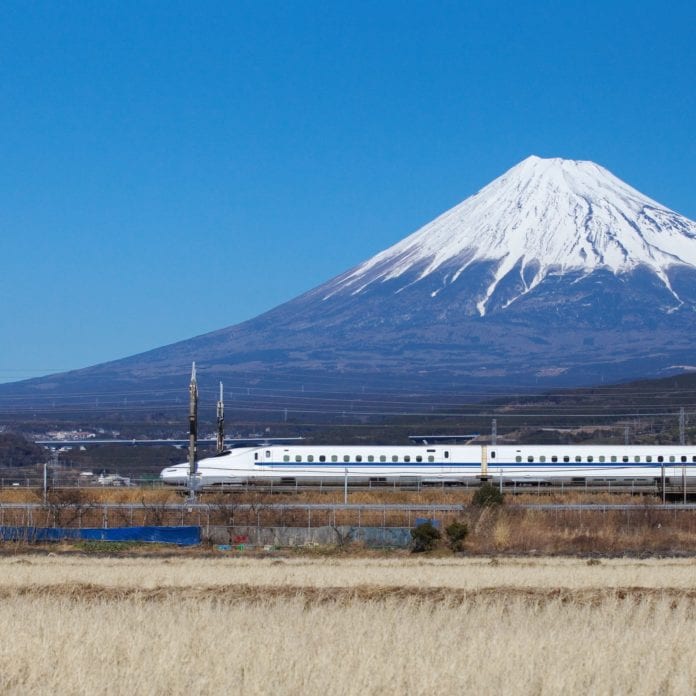KDDI, NTT DoCoMo, Rakuten Mobile and Softbank have all deployed mmWave 5G
Right now mmWave 5G deployments are focused on adding capacity to congested network hot zones, places like stadiums, music venues, shopping malls, transit hubs and dense central business or downtown areas. In addition to capacity offload, mmWave 5G promises to deliver new types of consumer and enterprise experiences that make use of high throughput, low latency and massive data pipes. To get an idea of how mmWave 5G is being used today, look no further than Japan where all four major operators—KDDI, NTT DoCoMo, Rakuten Mobile and Softbank–have deployed a collective 20,000 mmWave 5G base stations.
Qualcomm is a driving force in mmWave 5G with work ranging from standardization, system-level testing and optimization, modem support for compatible devices and RF front-end development that extends the range of high-frequency transmission and improves handover. Qualcomm’s Philippe Poggianti, vice president of business development and consummate mmWave evangelist, recently wrote in a blog post about his trip to Japan and experience with local mmWave 5G networks.
Conducting test using a Samsung Galaxy S22 in parts of Tokyo, including Harajuku and Shijuku, Poggianti and his local colleague Junko Sunaga “observed more than 2 Gbps download speeds, and greater than 300 Mbps upload speeds. Typically, this was over six times (download) and five times (upload) faster than a premium non-mmWave smartphone at the same location on the same network,” he wrote.
mmWave 5G in Japan
KDDI: KDDI has worked with Samsung throughout the deployment of its low- and mid-band 5G deployments, as well as for mmWave. This network also uses Samsung’s virtualized RAN solutions. KDDI has been working with its vendors to test mmWave since the mid-2010s, including looking at delivering new types of fan experiences in stadiums.
NTT DoCoMo: Working with parent company NTT, operator NTT DoCoMo is exploring advanced applications of mmWave, including improving indoor connectivity by using a reconfigurable intelligent surface to reflect mmWave signals to effectively follow mobile devices. The “metasurface” has a “user-tracking function to deliver radio waves even in places where the base station antenna is not directly visible due to obstructing objects.” The testing from November 2021 used the 28 GHz band. Also on mmWave mobility, NTT DoCoMo has tested base station hand-offs to maintain connectivity to a bullet train.
Rakuten Mobile: Rakuten Mobile built a greenfield 4G and 5G network in Japan using a virtualized, Open RAN architecture. With regard to mmWave, the operator has deployed around 13,000 distributed radio units which use Altiostar software and Airspan hardware containing Qualcomm silicon. In testing conducted in December, Rakuten clocked a 1.77 Gbps throughput speed.
Softbank: In the first quarter of 2021, Softbank launched mmWave 5G service also using Qualcomm tech. At the time, the operator put in market a mmWave-compatible mobile hot spot and has since made available more devices that support high-band spectrum. Softbank has also worked with Kyocera on wireless backhaul using mmWave. In a trial that ran from January to April, the partners connected base stations in Akiruno City, Tokyo, to relay nodes with the system conforming to O-RAN Alliance specifications. The goal of the test was to prove out high-capacity wireless backhaul for faster deployment in environments where running fiber is difficult and time consuming.
The mmWave 5G outlook
Reflecting on his experience using mmWave 5G in Japan, Poggianti called out the importance of a “robust” local ecosystem, including carrier support, government support, device availability, business cases focused on monetization and planned network expansion.
“It is a unique moment in history when a new technology as transformative as 5G mmWave takes root in a market,” he wrote. “We are witnessing this in Japan today and believe that any business not participating in the mmWave revolution in Japan will be missing out on a unique opportunity in time.”
While Japan is generally an early-adopter in new mobile and other technologies, there’s significant global traction for mmWave. Claro in Puerto Rico, LGU+, KT, and SKT in Korea, APT and Chungwha in Taiwan, China Mobile and HKT in Hong Kong, and Optus and Telstra in Australia, are all in the early stages of commercialization.
Elsewhere, regulators are working to allocate mmWave frequencies for 5G services in the following countries: Argentina, Austria, Brazil, Bulgaria, Chile, China, Croatia, Denmark, Estonia, Finland, Germany, Greece, India, Indonesia, Malaysia, Malta, Montenegro, Netherlands, North Macedonia, Peru, Poland, Russia, Slovenia, Spain, Sweden, Thailand, United Arab Emirates, United Kingdom and Uruguay.
A range of standards enhancements are also coming with 3GPP releases 17 and 18. Release 17 expands cellular in unlicensed spectrum to the 60 GHz band; adds licensed frequency support between 52.6 GHz and 71 GHz; improves inter-band uplink and downlink carrier aggregation; adds spatial separation for full-duplex IABs; and supports simple repeaters. Release 18, the beginning of 5G-Advanced, could include enhanced mobility with lower latency and better Layer 1 and Layer 2 inter-cell mobility, as well as further improvements to IABs and repeaters which can make densification faster and less expensive.
For more from Qualcomm on the role of mmWave in improving 5G network experiences, check out Poggianti’s mmWave master class session from the San Diego-based firm’s 5G Summit.

